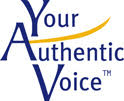 At times I’m asked, how do you do it? How do you decide what to speak about, what to include, where to insert stories and facts, and how to tie it all together?
At times I’m asked, how do you do it? How do you decide what to speak about, what to include, where to insert stories and facts, and how to tie it all together?
Well, that in a nutshell, is the art of crafting and delivering your presentation. And yes, I do have an approach that I’m glad to share with you. Other speakers may do it differently, but this is what works for me.
1. I decide what the point is — what do I want my audience to walk away with? This comes from talking to my client, asking a lot of questions, interviewing potential audience members — that kind of thing. The main point, and often the sub-points, will come out of this information.
2. Once I’ve gathered that information, I begin the process of determining what I need to include to back up my main point — three points and a “poem” — and what I have that can support that. I look at the content I already have to see what I might use. Sometimes I have an already developed speech that would be perfect! That doesn’t happen very often — I almost always end up customizing in some way to reach my audience. I might draw material from these other presentations to share in the new one, particularly stories I’ve already developed, if they make the point. Or, I do research to get new material.
3. I sit with the information. I don’t immediately write an outline, or do a draft. I let it stir around in my head. At some point, when I’m ready, I’ll get what I call the “download.” The speech starts writing itself. This process can go on for two weeks, and I jot notes down as it happens so I don’t forget, especially if the download wakes me up at 3 in the morning, or more likely 5.
4. I write the first draft of the speech, from beginning to end. I let it all out on the page without editing. Then, once again, I let it sit, because I will get new ideas, better ideas, and want to make changes. Do I want to add visuals? What will help me communicate this information?
5. I edit the draft, then read it out loud. I feel it out. I time it — does it work within the time I have? Do I need to make cuts, or fill in? What works? What needs tweaking. I edit.
6. I edit again, and once I have the final draft, I start rehearsing the script. I do this over and over again. Depending on the amount of time I have before the speech, I rehearse at least once a day. I record it if I can and listen to it in the car so I “learn” it. There are pieces I will memorize because I want to say them in a specific way. I also memorize the outline, and the flow, but I allow space for those serendipitous moments that come both in rehearsal, and when you deliver the speech.
7. While I rehearse, I look for those opportunities to use emotional engagement and creative expression techniques, and props. I start to incorporate them. I often use these in stories. I want my audiences to be entertained in addition to being informed and inspired.
This is my process. There is a lot more regarding content development. The amount of time you have to prepare before you deliver your speech will affect the process, but it doesn’t change it.
Then, it’s showtime. I do some vocal and body warmups, get comfortable with the space, check out the AV and room set up — that kind of thing. Then, I let go. I have to trust that I’ve got it within me. I set the intention that everyone will be better off after my speech than they were when they walked in and I set out to engage the audience and have fun. If you have fun they will, too.
Having the support of a coach can make the difference between an “okay” speech and knocking it out of the park. I’d love to support you to knock it out of the park!
Break a leg!
Andrea

Leave A Comment